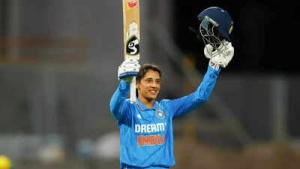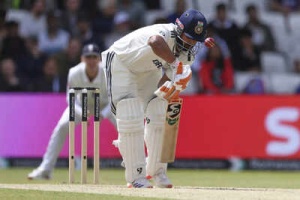Shefali Jariwala's Untimely Death: Shedding Light on Women's Cardiac Health
The sudden passing of Indian television personality and actress Shefali Jariwala has reverberated throughout the nation. While the official cause of death is pending confirmation through a post-mortem examination and forensic analysis, initial reports suggest a cardiac arrest. This incident highlights a growing and concerning trend affecting seemingly healthy, middle-aged women.

Sudden cardiac death (SCD) has historically been considered a rare occurrence among young adults. However, its increasing prevalence, particularly in India, is attracting significant attention from the medical community. Cardiovascular diseases are currently responsible for approximately 28% of all deaths in India, with nearly 10% of these attributed to SCD. A concerning number of these fatalities occur in individuals between the ages of 30 and 50.
India's ongoing socioeconomic transformation has led to widespread lifestyle changes. These include sedentary behavior, processed diets, tobacco use, and rising stress levels. These factors contribute to a surge in hypertension, obesity, diabetes, and coronary artery disease, all of which are key risk factors for SCD.
While historically more prevalent among men, recent studies emphasize the unique and often overlooked risks faced by women. Unlike men, women who experience SCD frequently have no prior cardiac diagnoses. Structural abnormalities, such as myocardial scarring and ischemic heart disease, often go undetected during their lifetime and are only identified during post-mortem examinations. Compounding the issue, many women do not exhibit classical warning signs like chest pain or ECG anomalies, making early detection incredibly challenging.
Women in their 40s and 50s, like Shefali Jariwala, face a silent but serious risk from underlying cardiac conditions. In younger populations, SCD is often linked to inherited or electrical disorders such as Hypertrophic Cardiomyopathy, Arrhythmogenic Right Ventricular Cardiomyopathy, Long QT Syndrome, Brugada Syndrome, and Catecholaminergic Polymorphic Ventricular Tachycardia. These conditions may remain asymptomatic until a fatal arrhythmia occurs.
In this age group, additional factors such as left ventricular hypertrophy, obesity, and myocardial fibrosis increase vulnerability. The progression of myocardial scarring and fibrosis with age can be attributed to cumulative exposure to cardiovascular risks, repeated micro-ischemic events, and hormonal changes, particularly during the perimenopausal years. Moreover, conditions like Myocardial Infarction with Non-Obstructive Coronary Arteries (MINOCA), more prevalent in younger women, often leave no trace in autopsies, further complicating diagnosis.
Stress played a significant role in Shefali Jariwala's life, starting from her early career as a teen star. Takutsobo cardiomyopathy (Broken Heart Syndrome), or stress-induced cardiomyopathy, is also a major cause of SCD in women who multitask and experience emotional stress. Shefali also faced personal struggles due to her divorce, along with anxiety, depression, and epilepsy—all of which can intersect with cardiovascular health. Psychiatric medications, particularly those that prolong the QT interval, have also been linked to an increased risk of SCD.
Despite the severity of the issue, women remain underrepresented in preventive heart care. Symptoms such as fatigue, palpitations, or breathlessness are often dismissed or misattributed, leading to delays in crucial intervention. In contrast to heart attacks—caused by blocked arteries—cardiac arrest results from electrical disturbances that cause the heart to stop suddenly. Immediate CPR and defibrillation are often the only lifesaving measures, underscoring the need for early risk identification.
Medical experts are advocating for more targeted public health strategies. There is a need to enhance early screening tools tailored to women, particularly during perimenopause when cardiac risks surge.
As the entertainment industry and fans mourn the loss of Shefali Jariwala, her tragic passing serves as more than a moment of grief—it is a rallying cry. Her death shines a spotlight on an overlooked health crisis and the urgent need for systemic change in how women's heart health is addressed.
Shefali Jariwala captivated audiences with her screen presence. In the wake of her untimely demise, she may be remembered as a symbol of awareness, a reminder that the heart’s silence can be fatal, and that women's cardiac health demands immediate attention, investment, and action.
Newer articles
Older articles
 Wimbledon 2025: Dates, Prize Money, and How to Watch Live in US & India
Wimbledon 2025: Dates, Prize Money, and How to Watch Live in US & India
 Gujarat Cricket Association Set to Launch T20 Tournament in 2025-26 Season
Gujarat Cricket Association Set to Launch T20 Tournament in 2025-26 Season
 Praggnanandhaa Joins Carlsen's Team Liquid Ahead of Esports World Cup Showdown
Praggnanandhaa Joins Carlsen's Team Liquid Ahead of Esports World Cup Showdown
 India vs. England 2025: Broad Warns England of Lethal Indian Pace Attack Ahead of Lord's Test
India vs. England 2025: Broad Warns England of Lethal Indian Pace Attack Ahead of Lord's Test
 Smith Poised for Grenada Test Return After Finger Injury Recovery
Smith Poised for Grenada Test Return After Finger Injury Recovery
 Raducanu Shuts Down Alcaraz Romance Rumors, Confirms US Open Doubles Partnership
Raducanu Shuts Down Alcaraz Romance Rumors, Confirms US Open Doubles Partnership
 Asia Cup 2025: ACC Eyes September Launch Amid Easing India-Pakistan Tensions
Asia Cup 2025: ACC Eyes September Launch Amid Easing India-Pakistan Tensions
 Mandhana Makes History: First Indian Woman to Score Centuries in All Cricket Formats
Mandhana Makes History: First Indian Woman to Score Centuries in All Cricket Formats
 Pant's Fearless Batting Sparks Gilchrist Comparisons: Chappell's Honest Assessment of India Star's Twin Tons Against England
Pant's Fearless Batting Sparks Gilchrist Comparisons: Chappell's Honest Assessment of India Star's Twin Tons Against England
 Prithvi Shaw Acknowledges Career Setbacks, Cites Distractions and Poor Choices
Prithvi Shaw Acknowledges Career Setbacks, Cites Distractions and Poor Choices